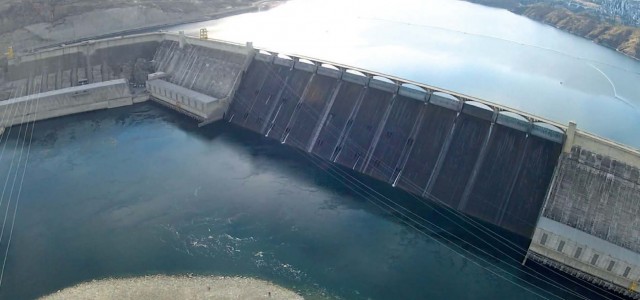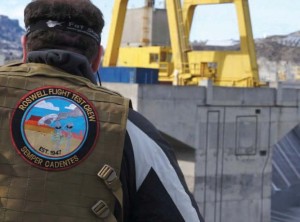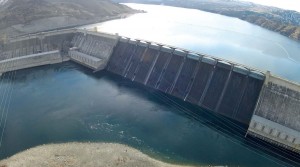An inside look on photographing landmarks
By Patrick Sherman
First-Person View (FPV) flying is fun, but flying over a unique location can be a once-in-a-lifetime experience, documented with high-definition video that you can share with the world on YouTube and other social media sites.It’s also an amazing rush, and an experience I’ve been fortunate to have on several occasions as part of the Roswell Flight Test Crew. However, should you bethinking of documenting locations and landmarks, be aware there is a right way and a wrong way to go about it. The wrong way is easy: just follow the example of a self-styled “aerial anarchist” who has gained a fair measure of notoriety on the Internet — roll up on site, unpack your gear, and put a bird in the air.I’m sure that’s a lot of fun, but it also has the potential to get you into some serious trouble and, it is ultimately very destructive to our entire hobby: all of us lose when flight restrictions are put in place because of the poor judgment of a few rogue operators.
About dam time
Doing it the right way entails considerably more time and effort, but it has one key advantage: you won’t get that hollow feeling in your chest when people with badges walk up to your ground station.As an example, let’s take a closer look of an excursion to the Grand Coulee Dam in eastern Washington State.Constructed between 1933 and 1942 as part of Franklin Delano Roosevelt’s “New Deal,” the Grand Coulee provided electricity to smelt aluminum during WW II. With the addition of a third powerhouse back in 1974, Grand Coulee became the most powerful electric-generating plant in the U.S., with a peak output of more than 6,800 megawatts. It’s an amazing place: awe-inspiring scale, a rich history – heck, Woody Guthrie even wrote a song about it! With all that going for it, who wouldn’t want to flyover the Grand Coulee Dam? Of course, before you even contemplate flying over such a major landmark, your FPV operations need to be air-tight: razor-sharp piloting skills,a proven aircraft with many hundreds of successful flights,reliable video and telemetry links, a seasoned spotter who is at least as skilled as you are on the sticks and, a ham radio license tucked inside your wallet. Flying over a billion dollars of critical infrastructure is not an appropriate moment to test a new aircraft or tryout a different video transmitter, much less to disregard fundamental safety procedures, like having a qualified spotter at your side.
Do your homework
A successful flight over a landmark begins weeks or even months before you actually arrive at the site. You will need to make contact with whomever is responsible for the location or the facility and ask for their permission — and this can be a time-consuming process. Often, such sites are governed by large bureaucracies, and it can take them a long time to process a novel request. Calling the day before you head out to go flying is almost certain to get you a negative response. I usually start by reaching out to the person or department responsible for communicating with the public – typically the Public Information Officer or a Public Affairs Officer. For a private organization, look for the media contact or someone in the Marketing department. This person will not be the one who ultimately decides whether or not you will be allowed to fly, but he or she can be a powerful ally if you can persuade him or her that you are a safe and responsible operator.
It’s tempting to make first contact via email, but by itself, this is unlikely to get you a good outcome. Think about it: you are the secretary who gets all of the emails addressed to “contact@landmark.gov” and there are two messages waiting for you when you get back from lunch. The first one is from “teacher@localschool. edu,” inquiring about arranging a tour for a group of third graders, the other one is from “lucidity@Roswellflighttestcrew.com” and prattles on endlessly about homemade drones and YouTube videos. Which one would you respond to first? Which one would you promptly forget about? I have occasionally made successful first contact via email, but have never flown a noteworthy location without actually talking to someone on the telephone, so expect that is going to be part of the process.





















